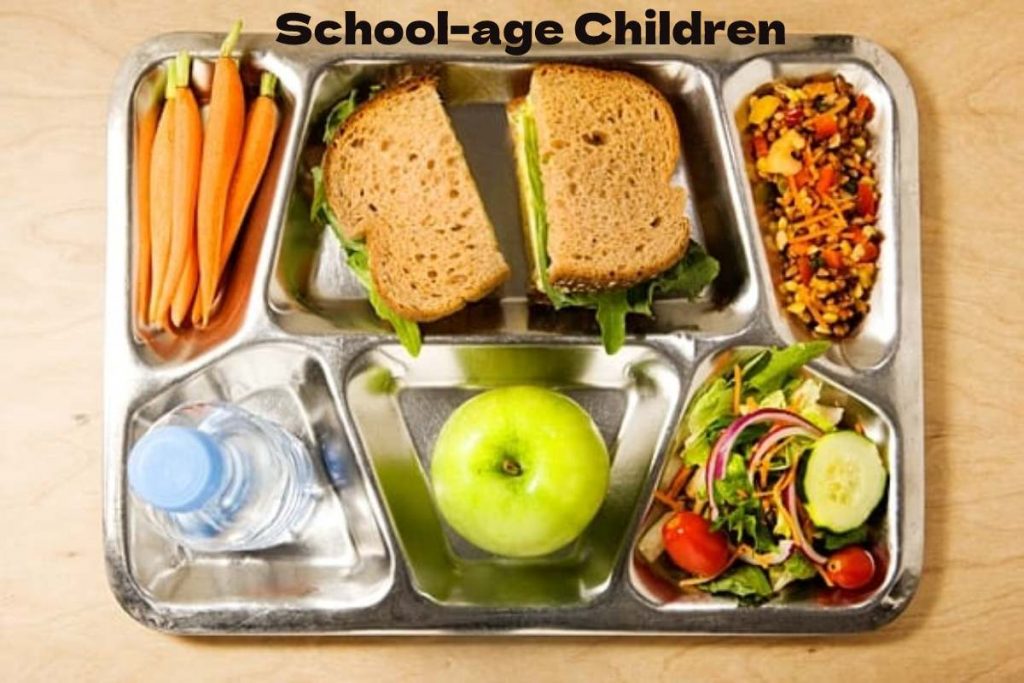Table of Contents
Introduction
School-age children, the requirements of his diet change because students are under enormous psychological and mental pressures. In addition, many children attend sports clubs.
At the same time, the organism continues to grow actively, and, therefore, adequate attention should always be paid to the nutritional needs of a school-age child.
Let’s learn about the products that children over the age of seven need, how much a schoolboy uses them every day, and how best to create a list for a child.
A child over the age of 7 needs a healthy balanced diet, at least for young children.
Essential Nutrients for School-Age Children
School-age children grow rapidly, which means that they need more nutrition to carry out daily activities as required. The lack of some key elements affects children’s cognitive development during that stage, which negatively affects mental development rates and reduces the mental development rates body immunity. The essential nutrients for the health of school-age children include:
Carbohydrates and fats: carbohydrates and fats provide the body with the energy needed for motor activities and growth, during which children’s appetite and desire to eat increase, the brain needs the power to complete its functions correctly, and glucose is vital for the development of cognitive tasks, homework and memory improvement.
Protein helps build and repair body tissue, so it is essential for proper growth for children. Parents should encourage their children to eat two to three servings of protein per day, one of the crucial healthy protein sources for children: meat, fish, poultry, and milk products.
Essential Fatty Acids: the lack of unsaturated fatty acids negatively affects children’s academic performance, helping to improve reading, writing, and spelling skills at a young age.
Calcium: An essential element for building bones and teeth, eating calcium-rich foods during childhood helps prevent osteoporosis and bone weakness in adulthood. one of the most important sources of dietary calcium is milk, dairy products, and leafy vegetables.
Iron: children need iron because blood volume increases rapidly during growth. Meat, fish, poultry, and cereals are the best sources of iron food.
Food Groups for school-age children
During the day, many calories must come from food to cover the child’s energy costs.
The student’s diet must be balanced with indispensable nutrients that can be replaced. to do this, it is recommended to be as hypnotized as possible.
It is crucial to take into account the individual characteristics of the child’s body.
At least 60% of the proteins in a student’s diet should come from animal products.
The number of carbohydrates received from a student’s food should be more than four times protein or fat.
The percentage of fast carbohydrates provided on a child’s dessert list should be between 10-20% of all carbohydrates.
It is crucial to have a meal system for the child to eat regularly.
The student’s diet should include bread, potatoes, and cereals. The flour products of the child should be cooked on rough flour.
Once or twice a week, the child must eat fish. At least once in the student’s weekly menu must have red meat.
Legumes are recommended for children of this age 1-2 times a week.
The child’s daily diet should be five servings of vegetables and fruits. Oranges, apples, bananas or other medium fruits, 10-15 grains or grapes, small fruits (apricots, peaches), 50 g vegetable salad, 1 cup of juice (natural juice is calculated only), one tablespoon of dried fruits, three tablespoons. l. boiled vegetables.
The daily baby should eat dairy products. Recommended three servings, one of which is 30 grams of cheese, one cup of milk, and one yogurt.
Sweets and fatty foods are allowed in the student system unless they replace healthy and healthy foods, where very few vitamins and minerals are found in cookies, cakes, pancakes, french fries, and other similar foods.
It is necessary to reduce the intake of artificial food additives, as well as spices.
Restricting the Following Products to the Child’s List
Sugar and white bread – with excessive consumption, cause weight gain.
Products containing food additives (dyes, preservatives, etc.).
Margarine.
Unseasonable fruits and vegetables.
Sweet soda.
Caffeine products.
Mayonnaise, ketchup, and other industrial sauces.
Spicy dishes.
Fast food
smoked sausages.
Mushrooms.
Soft Drinks
Dishes, which are cooked in deep fat.
Juices in bottles.
Chewing gum and candy.


